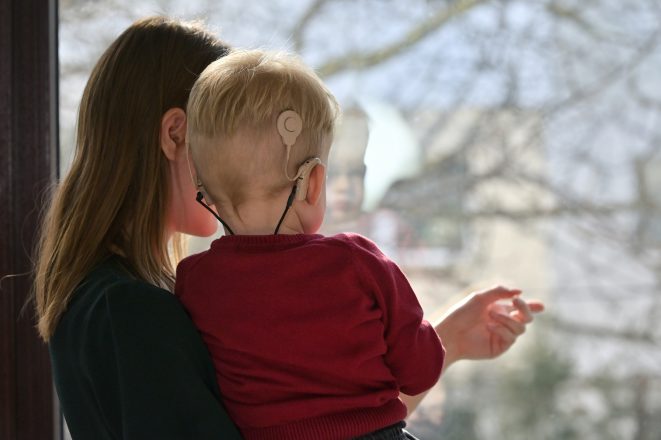Advertisment
Customised cochlear implants

Cochlear implants are a groundbreaking technology that has changed the lives of many people living with severe to profound hearing loss.
University of Sydney School of Biomedical Engineering researcher, Dr Greg Watkins, hears with the assistance of two cochlear implants after experiencing profound deafness in both ears following a 30-year career as an electrical engineer. Despite his profound deafness, with the help of his cochlear implant he has been able to complete a PhD in biomedical engineering.
Dr Watkins’ desire to help others living with deafness, his personal experience and career in engineering, motivated him to research cochlear implants. Now, his new paper has analysed the accuracy of predictions for cochlear implant outcomes with a view to further improving their performance in environments with lots of background noise.
Published in Ear and Hearing the paper presents a new method for the prediction of speech perception for individual recipients, providing a methodology that could make patient trials more efficient, potentially leading to implants that are personalised to an individual’s listening capability.
“My hearing deteriorated over a number of years and even with powerful hearing aids I had great difficulty having a conversation. Cochlear implants have helped to restore my hearing and stay connected socially and professionally,” said Dr Watkins, who received his doctorate earlier this month.
“Cochlear implants often provide near-perfect speech perception in quiet conditions, but hearing can still be improved in noisy environments, like in cafés or near traffic, compared to having no hearing loss.
“Evaluation of new sound processing ideas and testing them on recipients is a lengthy process. We have developed a metric which reliably predicts cochlear implant speech intelligibility in a range of conditions, allowing for more sound processing ideas to be tested.
“We took existing hearing test results for cochlear implant recipients and, using the output signal to noise ratio (OSNR) metric, accurately predicted how well they would hear in a range of quite different listening conditions.
“Potentially, this metric could be used to develop configurations which are customised to an individual recipient’s unique hearing capabilities,” said Dr Watkins.
The study was conducted under the supervision of Head of School of Biomedical Engineering, Professor Gregg Suaning and Dr Brett Swanson, a researcher at Cochlear Ltd. Professor Suaning said the research could lead to better outcomes for implant recipients.
“Cochlear implants are already extraordinary devices and have transformed the lives of hundreds of thousands of people world-wide,” said Professor Suaning.
“Despite their successes, there remain areas such as the cochlear implant’s performance in noisy environments where a personalised approach in taking the sound from the environment and translating that into electrical stimulation could conceivably make a world of difference.”
Dr Swanson said Dr Watkins’ research could reduce the amount of time needed to test the viability of new cochlear implant algorithms.
“A cochlear implant stimulates the auditory nerve directly, so if you’re a researcher with normal hearing, you can’t listen to it yourself. Instead, we rely on dedicated volunteers with cochlear implants who spend hours in sound-proof rooms listening to sentences in noise and telling us what they hear. It is vital work, but mentally draining. This research has the potential to drastically reduce the amount of time that we need from our volunteers,” said Dr Swanson.
HOW THE RESEARCH WORKED
The study was conducted as a retrospective analysis of existing clinical data sets. Each data set contained hearing test results of cochlear implant recipients in several test conditions.
The test condition closest to the recipient’s “everyday” listening condition was taken as a reference and the scores in that condition mapped to a prediction metric, the Output Signal to Noise Ratio (OSNR).
The OSNR was then calculated in other listening conditions and combined with the reference speech scores to predict the intelligibility that would be achieved for an individual recipient. The predicted scores were compared to the clinical scores and had a high accuracy.
Dr Watkins is currently evaluating extensions of the OSNR metric to determine whether even more accurate predictions are feasible and hopes to work with a manufacturer to develop a more accurate sound processing system.
Journal Reference:
- Greg D. Watkins, Brett A. Swanson, Gregg J. Suaning. Prediction of Individual Cochlear Implant Recipient Speech Perception With the Output Signal to Noise Ratio Metric. Ear & Hearing, 2020; 41 (5): 1270 DOI: 10.1097/AUD.0000000000000846





